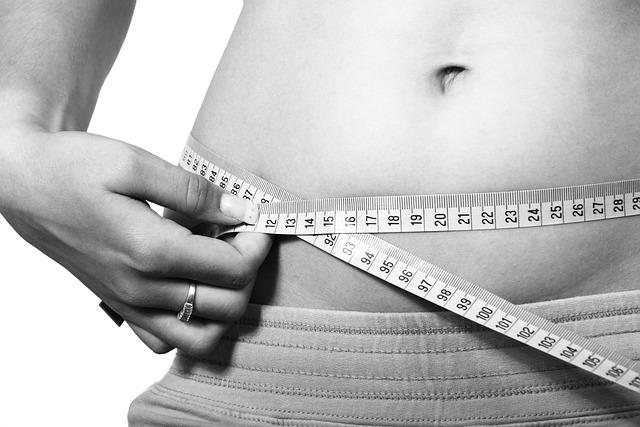In the quest for shedding those extra pounds, the debate between walking and running has long intrigued fitness enthusiasts and casual exercisers alike. Imagine a world where the gentle rhythm of a morning walk competes with the heart-pounding pace of a brisk run, each vying for the title of the ultimate fat-burning champion. As you lace up your sneakers, ready to embark on a journey towards a healthier you, a crucial question looms: Is walking truly better than running for fat loss, or does the faster stride hold the secret to slimming down? This article delves into the science, benefits, and nuances of both activities, unraveling the mystery behind which might be the most effective ally in your weight loss adventure.
Walking and Running: Understanding the Fat-Burning Mechanisms
The debate over whether walking or running is more effective for fat loss often centers around the body’s energy expenditure and metabolic pathways. Both activities have their unique ways of mobilizing fat, but understanding their distinct mechanisms can help tailor your fitness goals. Walking, often underestimated, operates primarily in the aerobic zone, which means it uses oxygen to convert stored fat into energy. This slower, steady activity allows the body to tap into fat stores more efficiently, especially during longer sessions.
- Lower Intensity: Walking is less taxing on the body, making it sustainable for longer durations and potentially burning more fat in the long run.
- Consistency: Due to its gentle nature, walking is easier to incorporate into daily routines without significant recovery time.
Running, on the other hand, is more intense and engages the anaerobic system, which relies on glycogen stores initially. However, this high-intensity activity elevates your heart rate significantly, leading to an increased caloric burn even after the exercise session is over, known as the “afterburn effect.” While it may not target fat directly during the activity, the overall calorie deficit it creates can be beneficial for fat loss.
- Higher Caloric Burn: Running burns more calories per minute, which can contribute to a larger calorie deficit.
- Afterburn Effect: Post-run, your body continues to burn calories at a higher rate as it recovers.

The Science Behind Caloric Burn: Walking vs. Running
When it comes to the physiological mechanics of burning calories, both walking and running activate your body’s energy systems, yet they do so in different ways. Walking, a low-impact activity, primarily engages your aerobic system. It is excellent for those who prefer a steady pace and can be sustained over longer periods. This makes it ideal for beginners or those recovering from injuries. Walking burns calories steadily, and although it might seem slower compared to running, it can still contribute significantly to fat loss when done consistently.
On the other hand, running intensifies the demand on your body, engaging both aerobic and anaerobic systems. This high-impact activity not only burns more calories per minute but also elevates your metabolic rate even after the workout is over, a phenomenon known as the “afterburn effect” or excess post-exercise oxygen consumption (EPOC). While running is efficient in terms of time spent versus calories burned, it might not be suitable for everyone due to its higher strain on joints and muscles.
- Walking: Low-impact, steady caloric burn, suitable for all fitness levels.
- Running: High-impact, increased calorie burn, boosts metabolism post-exercise.

Injury Risks and Recovery: Choosing the Safer Path to Fat Loss
When considering fat loss, the potential for injury is an important factor to weigh. Running, while effective for burning calories, can often lead to injuries such as shin splints, knee pain, and stress fractures. These injuries can be attributed to the high-impact nature of running, especially on hard surfaces. Conversely, walking is a low-impact exercise, significantly reducing the risk of injury. This makes walking a safer alternative for individuals who may have joint issues or are recovering from previous injuries.
Why choose walking over running for fat loss? Here are some compelling reasons:
- Reduced Impact: Walking places less stress on joints, making it ideal for those with arthritis or recovering from injuries.
- Consistency: The lower risk of injury with walking means fewer interruptions to your fitness routine.
- Accessibility: Walking requires no special equipment and can be done almost anywhere.
- Versatility: You can easily adjust the intensity by varying speed or adding inclines.
Choosing the right exercise for fat loss is about balancing effectiveness with sustainability and safety. Walking offers a path that prioritizes long-term health and consistent progress.

Tailoring Your Routine: Expert Tips for Maximizing Fat Loss
When it comes to shedding those extra pounds, the choice between walking and running often sparks a lively debate among fitness enthusiasts. Both forms of exercise have their unique benefits, but tailoring your routine to maximize fat loss requires a deeper understanding of how each activity affects the body. Walking, often underestimated, can be a powerful tool for fat loss. It is a low-impact exercise that is gentle on the joints and accessible to people of all fitness levels. By maintaining a steady pace, you can enter a fat-burning zone, especially when walking for extended periods. Furthermore, walking can be seamlessly incorporated into your daily life, whether it’s through commuting, taking the stairs, or leisurely strolls.
On the other hand, running is a high-intensity workout that elevates your heart rate and accelerates calorie burning. It’s an efficient way to torch fat, but it demands more energy and can be more challenging to sustain over time. For those seeking to maximize fat loss, a balanced approach might be most effective. Consider the following tips:
- Incorporate Interval Training: Mix short bursts of running with walking intervals to boost calorie burn.
- Focus on Consistency: Whether walking or running, consistency is key. Aim for at least 150 minutes of moderate aerobic activity each week.
- Listen to Your Body: Pay attention to how your body responds to different intensities and adjust your routine accordingly.































